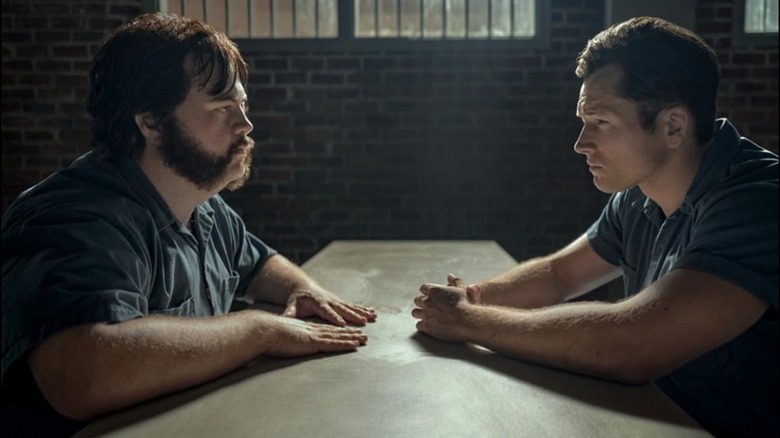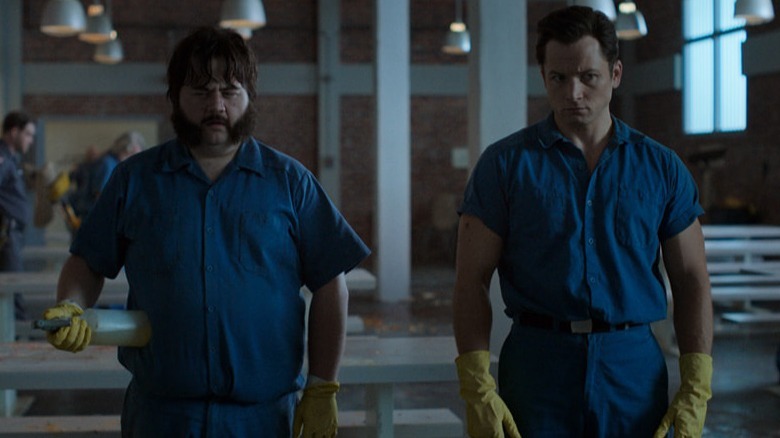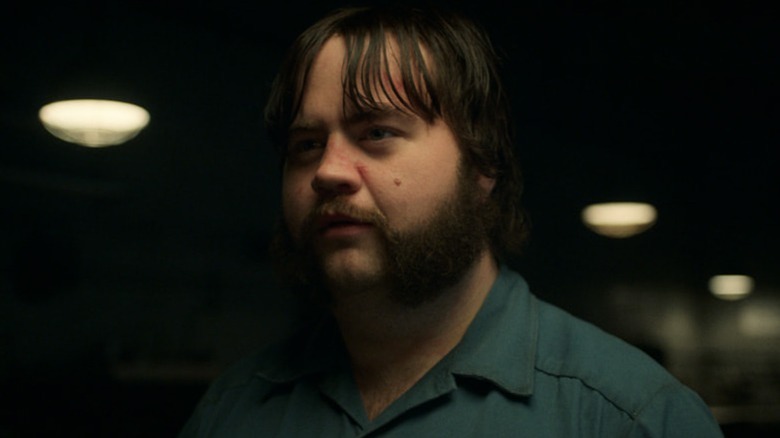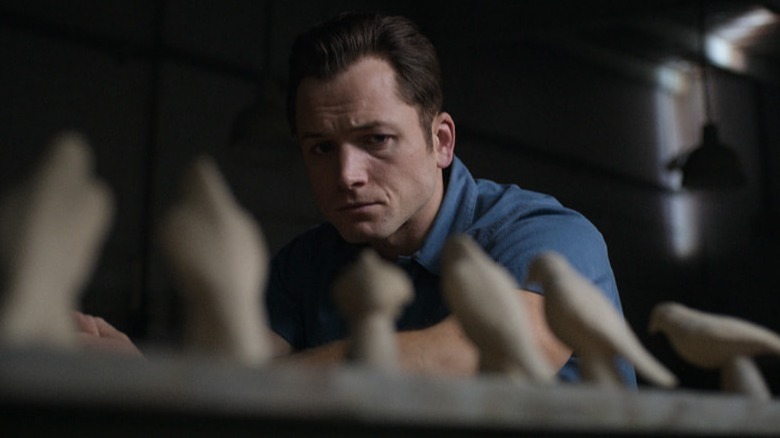The True Story Behind Black Bird
"Black Bird" is one of the most intense and finely crafted true crime stories of the year. The series made by "Mystic River" writer Dennis Lehane has a lot going for it, from subtle scripts that ratchet up the intensity of the serial killer-centric story without ever feeling exploitative, to explosively great performances from Taron Egerton and Paul Walter Hauser. Egerton's cocky criminal Jimmy Keene is countered at every step by the man he's supposed to be talking into a confession in prison, alleged serial killer Larry Hall (Hauser). The pair's dynamic is anything but simple, and the series lets it unfold steadily across its six compelling episodes.
The Apple TV+ series also features the last performance from Ray Liotta, who, as Jimmy's sick father, motivates him to take a deal as a federal operative purposely placed in prison alongside Hall. The whole series sounds like a case of truth being stranger than fiction, but how much of it actually adheres to the real-life story that inspired it? It turns out, actually quite a lot.
A stranger-than-fiction story
"Black Bird" is based on James Keene's book "In With the Devil: A Fallen Hero, A Serial Killer, and A Dangerous Bargain for Redemption," so it's important to note that it tells the story pretty much entirely from Keene's perspective. But as far as that perspective goes, the series is pretty dang accurate. According to the memoir and Newsweek, the real-life Jimmy Keene was an Illinois high school football star before he got into the drug dealing business, ultimately earning a 10-year sentence after being subject to a DEA bust in 1996.
Newsweek writes that Assistant U.S. Attorney Lawrence Beaumont gave Keene an offer like the one we see in the series about a year into his sentence. The plan was for Keene to go undercover in the maximum security prison where Hall, a suspected murderer, was staying and ingratiate himself to the possible killer to extract a confession. Hall had reportedly confessed to Beaumont with a statement that implicated him in the murders of several people including 15-year-old Jessica Roach, just as he did with Greg Kinnear's character, Brian Miller, in the show.
But the confession wasn't airtight: he later claimed he was just describing his dreams, and while he landed in prison with a life sentence anyway, authorities wanted a more complete confession to give the families of victims – including that of Wesleyan student Tricia Reitler – some closure. After Keene's dad suffered from a stroke that called the time they'd have left together into question, he decided to cooperate with the plan and feign friendship with Hall.
The real life Hall and Keene
The real-life Hall apparently has plenty in common with his on-screen counterpart, from his interest in war reenactments, to authorities' initial concern that he might be a serial confessor, to the van in which investigators found evidence that led to his eventual conviction in Roach's kidnapping (per Digital Spy). While the real Hall is still alive and in prison, Hauser told Entertainment Weekly he used photographs, texts, and context clues to put together his version of the character, adding, "I really just had to kind of go to my laboratory and construct this character based on the writing and based on what Taron was doing."
Egerton, meanwhile, was able to work with Keene, who was an executive producer on the series and even had a cameo role as a prison guard in episode six. He tells EW that he added an element of aggression to his version of Jimmy, saying:
"I think when it comes to some of the darker aspects of Jimmy's nature in our story, it would be remiss of me to claim that they are taken from him because I think he's a better adjusted, more kind of likable guy than the Jimmy I create at the start of the story."
As for the differences between Hauser and Hall? Apparently, the real-life killer's voice is even more high-pitched than the one Hauser puts on in the show, to the point that it would be "distracting." In his interview with EW, the actor confesses that "what you see is me at like a seven, seven-and-a-half rather than the 10 of absurdity in his vocal tone."
A changed ending
"Black Bird" hews pretty closely to Keene's memoir, but it does change one pivotal thing about the story: its ending. In the series, Jimmy finally gets Larry to open up after discovering a map he made in prison, complete with carved wooden falcons that seemed to indicate the location of the bodies of some of his victims. In real life, this encounter did happen, but CNN reporting indicates that Hall wasn't exactly talkative about the meaning of the map, and it was never located. The series also implies that Hall's twin brother Gary may have been involved in his crimes or their cover-up, but Gary Hall told CNN that Larry tried to kill him, and that he believes he's one of the country's most prolific serial killers.
Keene, believing he'd gleaned everything he needed and would be released quickly thereafter, blew his own cover with Hall after the map incident. "I told him he was a...sicko," he told CNN. "I told him that he was insane. I said that 'You are one of the most despicable forms of human life on this planet.'" As in the series, the plan didn't exactly work out, as Keene was thrown into solitary confinement before eventually being released as agreed.
Reitler's parents never got the full sense of closure they hoped for, and while they've expressed thanks to Keene and were even interviewed for his book, they also questioned how successful his undercover mission really was, with Garry Reitler asking "Why would you have been so close and then give it up like you did?" on an episode of "Dateline" in 2012. Hall remains in prison for the kidnapping of Jessica Roach, though he has never been charged with murder.



